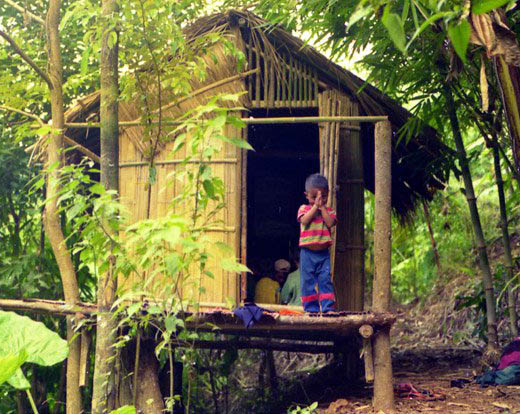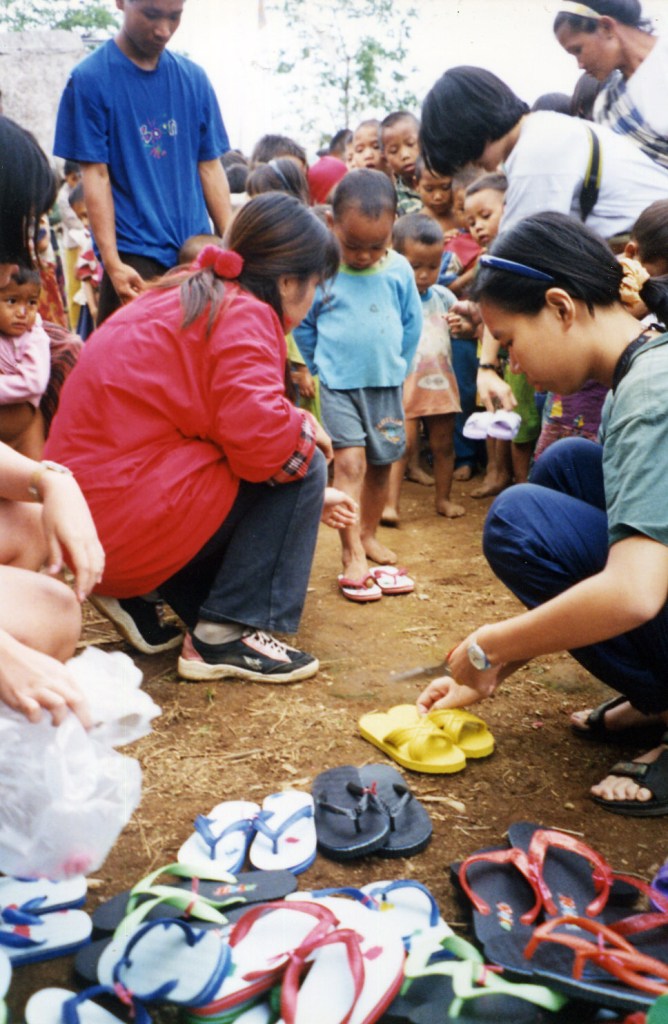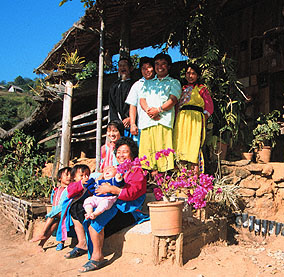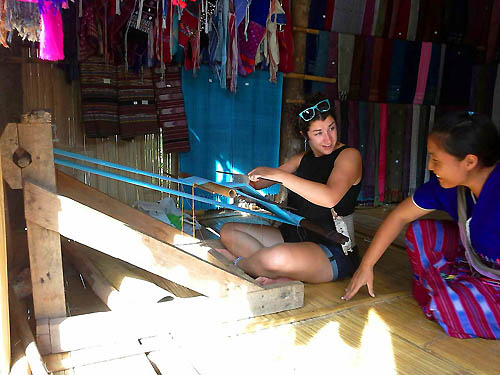
About our Thailand Tour Company
All Thailand Experiences
and Founder Mr. Randy Gaudet
I first came to Thailand in 1968 while in the U.S. Air Force stationed in Udorn Thani in east Thailand. I was stationed here for 2 years before being stationed in Japan and Korea. I Loved Thailand so much I cried when I left and promised myself I would return.

In 1989 I had the offer to volunteer at Payap University in Chiang Mai Thailand for 2 years and accepted. Here I was supervisor of the communications department at Christian Communication Institute at the university where I supervised installing and training staff of the audio and video studio at CCI. While at the university I took the opportunity to take Thai language and Lanna Thai (North Thailand) history, culture and music classes.


After my commitment was finsihed at Payap University I lived in a remote area of north Thailand at Wat Thaton temple in the town of Thaton on the Myanmar border for more than 3 years. I taught English to Monks, novices, high school students, the Thai Army, local and tourist police. I also did hill tribe programs by taking a small number of tourists to hill tribe villages to spend the evening. All the money for the trek went to the villagers. I bought clothes for the children, medicines and blankets for the families I paid the villagers to build a bamboo schoolhouse and paid a teacher to teach Thai at the school who could speak their language. I taught them how to dispose of waste properly, keep the children and village clean and to use spoons instead of their fingers when eating which was a big source of their health problems. I provided seeds and Logan and lychee fruit trees for planting.

This was fine until I left the temple then the school stopped and the health problems returned. I talked with the Abbot of the temple and he now has a school for the children at the temple. He has a nurse looking after the children and takes those to the clinics that have problems.
While I was there I help start a guest home where travelers could stay in a Lisu hill tribe village and go trekking in the jungle and visit primitive hill tribe villages in the area. This was not easy, as the villages we visited didn’t want visitors as they wanted to maintain their lifestyle and culture. They have seen other villages who accept tourist turn into a village without harmony and lost their culture. These villagers were farmers and didn’t want to look at tourism as a source of income. I understood the problem as I have seen what a tour operator can do to a village. To them money is first and they don’t care about the hill tribe people or their way of life.

I stayed in these villages and met with the village headmen many times. I learned about their culture, way of life, religion, and do’s and don’ts. We then came up with a plan that worked out well for the villagers and our clients.
We can only stay in a village 1 night per week and no more than 6 persons. There are 35 villages in this area so we always have a village to take our clients. Nothing is allowed to be given to a villager directly by the visitor. It must be given to the guide who then gives it to the villager. No candy for the children and no photographs without permission. No money is allowed to be given for a photograph. The guide must be from the local area and must also be hill tribe and speak the language of the village.

I then trained 3 hill tribe men from the local area who speak English to be our guides. None of these men drink or smoke and their families are very well respected by all the villages.

For the Jungle portion of the trek I had to teach the guides to use a different trails so it could grow back. They make a hut out of bamboo and banana leaves for sleeping and I taught them not to clear cut and not to return to an area for at least two months. No more hunting of birds or wild animals.
Without the local culture we would not be able to give our clients the experience they are looking for. We also encourage our clients in helping the local people we visit.

Most of our clients want to help the poor villagers that they visit. We take them to a market here in Chiangmai to buy shirts and pants for the children before we visit. Shirts or pants can be purchased for a little as $1 USD, blankets for about $3 USD. We have had groups including one from Singapore who stayed at 3 different hill tribe villages. They brought medicines, blankets and clothes. They repaired playground equipment and repainted the school. We follow God’s word in Isiah 58: 7 “Is it not to share your bread with the hungry, And that you bring to your house the poor who are cast out; When you see the naked, that you cover him, And not hide yourself from your own flesh?”.

Our company buys clothes and blankets every year when cold season arrives to give to needy villagers. We also help orphan and abandoned children in 3 different children homes here in north Thailand.

We have trained and employed hill tribe people and families to be guides for us and host our clients. We helped Asa, a Lisu Hill Tribe man who has the guest home, photo right, get started and now has a very successful business. He handles all our treks for us along with other guides and porters he has hired. He used to get only 50 baht per day per group and now gets more than 1800 baht per person for taking our clients. We have a loving relationship with all the people that work with us and those we visit. To us they are family and our clients notice this and is mentioned often.
There are hundreds of tour operators in Thailand and most take their clients to the same areas and places. Most of these areas have more tourists than Thai people so there is no cultural experience to speak of. We won’t do that to our clients. We want them to enjoy a wonderful experience they will remember for a lifetime.

We specialize in quality and service with as much interaction with nature and culture as possible. I have been living in Thailand since 1989. I have traveled extensively throughout the Kingdom and wanted to share my wonderful experiences of Thailand with others. I talked with many travelers here in Thailand and saw a need to take visitors away from the normal tourist areas filled with large tour buses and groups. The biggest complaint I heard from visitors is “there is no real Thai culture”. “Everything is staged for the tourists”. This is because they keep following each other around using their guide books.
It took about 2 years of research to find the areas that were safe and could handle visitors. I spoke with village headmen, temple Monks, Hill Tribe villagers, National Park officials and local bird experts. I then had to train a staff that would take care of our clients with excellent service and provide correct information about Thai and hilltribe culture, Thai food, Buddhism, birds of Thailand, etc.

All our guides are registered with the Tourism Authority but that is not enough. Our training program is by far the best in the Kingdom. They must not only study the subjects but also go to each area, town or village and learn first hand about the people their culture, birds and animals of the region along with any festival or event and when it takes place.

Our main and only goal is to provide a great experience our clients could not enjoy with any other guide or tour operator. From the comments in our “Guest Book” at our web site, email from previous clients and the large number of referrals we are meeting our goal. What we all enjoy is when our clients finish their tour they tell us “It was one of the best holidays we ever had and thank you so much”. “I will surely recommend your services to others”.
To us conservation is more than the natural environment. We take many clients to very cultural sensitive hill tribe villages. This is a very difficult balance of very different cultures but can be maintained. We follow 4 basic rules to maintain harmony in the villages and help the environment
Since we do only private custom excursions we want to know the needs of our clients. We then email back to them what we will and will not do for them. Most of our clients know only what they read from agent brochures about what to do in Thailand and these tours might not be the best for them. We explain to them that we do not go to these places and why.

We send several email messages back and forth asking and answering questions before an itinerary is approved. We then do many follow up email messages about what they will experience, cultural do’s and don’ts, and answer any question they may have. By the time they arrive they have an excellent knowledge of all aspects of their journey with us.

Many of our clients are families and have special needs. We ask many questions about the children such as favorite foods and their interests as we want them to enjoy their holiday also. We want to know if anyone in the group is having a birthday or anniversary while they are with us so that we can make their day special.
Once our clients arrive we are on call 24 hours a day for them. They can telephone us anytime about any questions they may have. From the time they arrive at the airport to the time of departure back to their home we are there for them.
After they return home most of our clients stay in contact with us. Not only do they thank us for a wonderful time but they ask about the people they made friends with while with us. I am happy to say we have made many good friends from all over the world with those who have been with us.

I have talked with other tour operators and the Tourism Authority of Thailand about being responsible in maintaining hill tribe culture. No one seams to care, as money is the bottom line. Exploitation of the hill tribe people and their way of life are common here. I have been able to give lectures at guide classes for the TAT. I try to teach them about being responsible for maintaining the hill tribe culture. After all it is the guides who are in contact with the villagers and clients not the tour operators.
Randy Gaudet
Founder/Director
All Thailand Experiences




